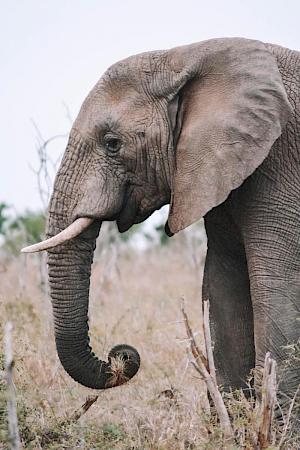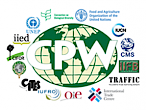Are CITES COP19 agreements standing the test of time? Committee meets to discuss progress towards CoP20
CITES Parties will this week gather in Geneva to take stock of progress since the 19th Conference of the Parties (CoP19) in November 2022 and set the course for implementation of the Convention in the lead up to CITES CoP20 in 2025.
Significance of the meeting
The 77th meeting of the CITES Standing Committee (SC77) is underway in Geneva, marking the first gathering of the Committee since CITES CoP19 in November 2023. At CoP19, Parties adopted a series of milestone decisions to regulate trade in a number of commercially important wild species and strategic actions to help tackle the global biodiversity crisis.
This meeting is an opportunity for Parties to examine the progress made in implementing those decisions and identify any gaps, obstacles, and actions needed to address them. Capacity and resources for these actions are key."
Sabri Zain, TRAFFIC's Director of Policy
Global Strategic Progress
Aligning CITES Strategic Vision with other global frameworks
SC77 is also the first Committee meeting since governments adopted the Kunming-Montreal Global Biodiversity Framework at the Convention on Biological Diversity CoP15 in 2022. This landmark agreement includes 23 Targets to halt and reverse biodiversity loss by 2030; one target focuses on ensuring that the harvest, trade and use of wild species are legal, sustainable and safe. SC77 will review areas of alignment between the two global plans to explore how each can support the other in their objectives.
To monitor progress and the alignment of these targets, TRAFFIC also welcomes the progress made in refining the indicators used by the CITES Strategic Vision and ensuring they are consistent, harmonised, and mutually supportive of those used by the Kunming-Montreal Global Biodiversity Framework.
With the adoption of the CBD Global Biodiversity Framework and implementation now underway, CITES can play an essential role in assisting governments to meet the ambitious targets agreed. A key example of a joint approach in this sphere can be found in Sustainable Wildlife Management. At CBD’s Subsidiary Body on Scientific, Technical, and Technological Advice (SBBSTA25) last month, the Collaborative Partnership On Sustainable Wildlife Management Release, chaired by CITES Secretary-General Ivonne Higuero, launched its Workplan to 2025.
Reducing the risk of future zoonotic disease emergence
Another strategic issue to be discussed is the role of CITES in reducing the risk of future zoonotic disease emergence associated with international wildlife trade.
"We are confident that there will be strong collaboration between CITES and members of the One Health quadripartite - WHO, WOAH, FAO and UNEP. This will ensure sufficient technical and strategic advice on wildlife trade that will inform global efforts at reducing zoonotic disease risk," says Sabri Zain.
Rise of Demand Reduction Initiatives
Efforts to reduce the demand for illegally traded species are also on the SC77 agenda. Parties will discuss recent developments, including the first regional training seminar on demand reduction strategies to combat illegal trade in CITES-listed species was held in Asia last month. TRAFFIC supported the CITES Secretariat in organising the event, attended by 14 Parties from the region and the Middle East.
"We are pleased that the seminar resulted in commitments made by some Parties to implement tools and approaches highlighted at the event. The workshop has demonstrated how it has benefited the implementation of some species-specific CITES Decisions. This has certainly set the stage and provides a good model for the regional workshops in the Africa and Latin America regions scheduled for 2024,” says Gayle Burgess, TRAFFIC’s Behaviour Change Programme Leader
Some key species-specific issues:

The agenda includes progress and further actions needed to tackle illegal trade in elephants, rhinos, and big cats.
For example, the CITES Secretariat will report on the implementation of Resolution Conf. 10.10 on trade in elephant specimens. This will include updates on progress to meet recommendations that will strengthen the effectiveness of CITES' Elephant Trade Information System (ETIS), managed by TRAFFIC.
A side event will take place on 9 November, providing Parties with an overview of the data validation processes and alert systems in ETIS to support transparency and law enforcement efforts. Several countries will also share their experiences, best practices and challenges, and their use of ETIS data in national and CITES processes.
Parties will also discuss a proposal to revise an existing Resolution on 'Conservation of and trade in tigers and other Appendix-I Asian big cat species' so that it can be applied to all big cat species, including African Lions and Jaguars. However, TRAFFIC believes there is a vital need for a thorough analysis of the proposal's benefits and drawbacks, cautioning against diluting attention across individual species and regions.
TRAFFIC Delegation at SC77
The SC77 meeting presents a crucial opportunity to address pressing and complex issues to ensure the sustainable trade of wild species. A select group of TRAFFIC staff will be attending the meeting in Geneva and will be on hand to share the latest data and evidence from our ongoing research on the subject of wild species trade.
Convention on International Trade in Endangered Species of Wild Fauna and Flora (CITES)

The Convention on International Trade in Endangered Species of Wild Fauna and Flora, is an international agreement between governments that aims to ensure that international trade in specimens of wild animals and plants does not threaten their survival. Find out more here.
About Collaborative Partnership on Sustainable Wildlife Management

TheCollaborative Partnership on Sustainable Wildlife Management (CPW) is a voluntary partnership of 14 international organizations with substantive mandates and programmes to promote the sustainable use and conservation of wildlife resources. The mission of the CPW is to increase cooperation and coordination on sustainable wildlife management issues among its members, where such adds value, in order to promote the sustainable management of terrestrial vertebrate wildlife in all biomes and geographic areas, contributing to the conservation and sustainable use of biodiversity, and to human food security, livelihoods and well-being.
About the Convention on Biological Diversity

The Convention on Biological Diversity (CBD) is an international treaty for the conservation of biodiversity, the sustainable use of the components of biodiversity and the equitable sharing of the benefits derived from the use of genetic resources.
The Convention seeks to address all threats to biodiversity and ecosystem services, including threats from climate change, through scientific assessments, the development of tools, incentives and processes, the transfer of technologies and good practices and the full and active involvement of relevant stakeholders including indigenous and local communities, youth, non-governmental organizations, women and the business community.
The Cartagena Protocol on Biosafety is a subsidiary agreement to the Convention seeking to protect biological diversity from the potential risks posed by living modified organisms resulting from modern biotechnology. To date, 160 countries plus the European Union have ratified the Cartagena Protocol. The Secretariat of the Convention and its Cartagena Protocol is located in Montreal. For more information visit www.cbd.int





